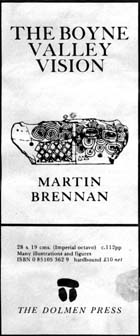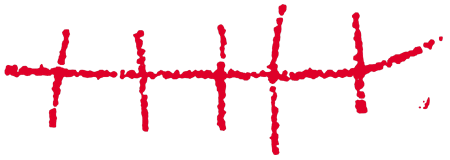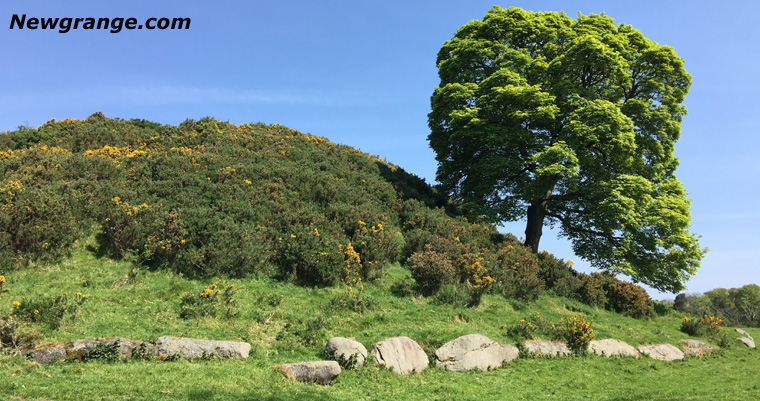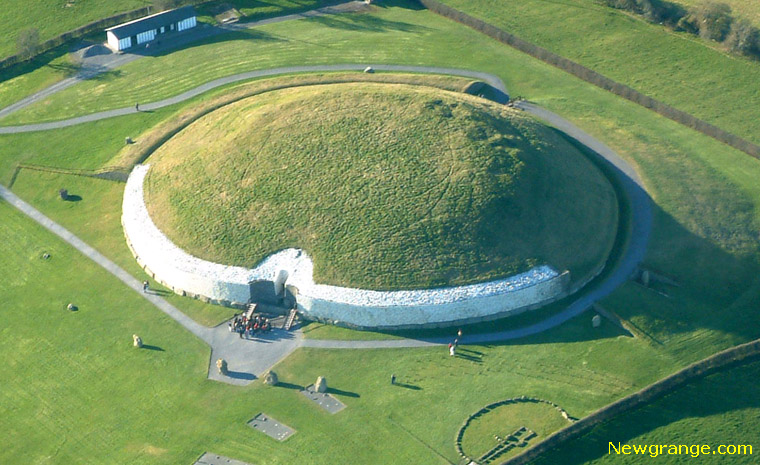Cracking the Newgrange Code - Martin Brennan - Page 1
 "If
we can visualise Newgrange as a scientific instrument for a moment, we can get a glimpse of
what it actually is. Regardless of how specialised it is, it
is the world's oldest sundial and at the same time, the world's
largest. It is the oldest scientific instrument in the world
that is still functioning and it will continue to function for
all conceivable time regardless of minor changes in the tilt
of the earth's axis" Martin Brennan.
"If
we can visualise Newgrange as a scientific instrument for a moment, we can get a glimpse of
what it actually is. Regardless of how specialised it is, it
is the world's oldest sundial and at the same time, the world's
largest. It is the oldest scientific instrument in the world
that is still functioning and it will continue to function for
all conceivable time regardless of minor changes in the tilt
of the earth's axis" Martin Brennan.
Some of the most profound and astounding archaeological discoveries have just been made in the Boyne Valley. The symbols and design on the megalithic stories have finally been decoded by an American-Irish investigator, Martin Brennan. And the findings shatter everything we believed about ancient Irish civilisation and culture. The Newgrange discoveries will shake the foundations of our concepts of human cultural and scientific development. EXECUTIVE magazine is delighted to be the first to present a first person exclusive report by Martin Brennan on these findings which will undoubtedly have worldwide repercussions.
Five thousand years ago, a Stone Age people in Ireland left a testimony of their cultural achievement which still exists today in terms of enormous mounds, stone circles and rock inscriptions. Although some of these mounds have been described as the most important prehistoric monuments in the world, and over seven hundred stories in Newgrange and in other areas of the Boyne Valley region bear inscribed designs representing the very roots and origins of Celtic Art, no conclusive evidence regarding their purpose, meaning or intent has ever before been presented. Over hundreds of years, generations of investigators have been left bewildered over what has stood as one of the greatest and most puzzling enigmas of mankind.
After more than ten years of study, the key to the solution of the age-old mystery of the Newgrange rock inscriptions finally came to me a few months ago in a single flash of inspiration. This not only enabled me to decipher the inscriptions but to provide, for the first time, a comprehensive explanation of the mounds themselves and the purpose of their design and placement. More startling, I have uncovered a highly sophisticated and advanced technology, a Stone Age science in ancient Ireland, which no-one has hitherto guessed at. This exciting discovery emerged after a full picture of what happened in the Boyne Valley was reconstructed.
 For the past ten years,
I have been working to unravel the
Newgrange enigma. While I
had made a number of significant advances, I knew that I was
on the verge of a major discovery yet one that tantalisingly
eluded me. I was convinced that sufficient research would yield
up the great secret of the Boyne Valley stones the uncoding
of the drawings and inscriptions. But despite every effort, I
had not succeeded.
For the past ten years,
I have been working to unravel the
Newgrange enigma. While I
had made a number of significant advances, I knew that I was
on the verge of a major discovery yet one that tantalisingly
eluded me. I was convinced that sufficient research would yield
up the great secret of the Boyne Valley stones the uncoding
of the drawings and inscriptions. But despite every effort, I
had not succeeded.
During Easter of this year, I decided to make an all-out attempt to achieve the big breakthrough. I would apply the rigorous disciplines of an in-depth analysis to the rock designs. My previous years of research, while not leading to an insight into the meaning of the inscriptions themselves, did convince me that there was a meaning and that the meaning could be discovered. This conviction gave me a distinct advantage over previous investigators who held that either the inscriptions were meaningless decorations, or that they had a symbolic meaning to the Stone Age mind which we could never hope to comprehend. When I studied the work of these investigators, I realised that their assumptions had influenced their work. They did not break the code because they did not believe there was a code to break.
At the risk of over-simplifying, there is a well-established method for breaking a code. First, the components of a script are divided into its various parts. Although an initial attempt at this had been made in Newgrange by previous investigators, and the configurations were seen to successfully fit into identifiable categories, the next step in the process had never been taken. This next step is difficult and painstaking. It amounts to finding out by meticulous observation and comparison the order and the rules which govern the placing together of the various components.
If there is a code, one will be able to detect a consistency, a pattern of organisation that is repeated often enough to be able to identify it. Given this pattern, the code can be broken eventually.
This process of decoding is usually applied to scripts that are known and recognised, or to secret codes in cryptic form, when the language is known. The Boyne Valley inscriptions are not scripts but I quickly found out that they responded to the decoding method in interesting ways. The inscriptions are visual designs and I was fortunate in that, in my training in design, a scientific approach had been taken. At the end of three weeks of intensive analysis I suddenly struck upon the insight which at once radically changed my concepts about the nature of the inscriptions and put the history of the development of human culture into an entirely new perspective.
I had just arrived at the farmhouse in the Boyne Valley that I use for field work in the research. I unpacked, chopped some wood and settled down watching the flickering flames beginning to grow. As I stared into the fire, I tried to make sense of one of the more curious factors I had come across. This was inconsistent symbol, the one that didn't seem to belong with all the others. I had managed in the standard decoding fashion to arrange all the stone symbols and drawings into distinct categories. But one did not fit. It was this one:

It is known as an offset. I had seen them in the beginnings of Ogham, the ancient Celtic writing. They appeared often enough on Boyne Valley stonework to be considered as a category of their own. Yet they were quite different in category from the rest. What were they?
As I concentrated on their possible meaning, the answer came in a flash: they were simply and obviously what they appeared to be: a segmented line divided into parts that give measurements, a ruler giving the Boyne Valley canon of measurement. I instantly knew that this was the breakthrough that I had been waiting for over the years.

Dowth Megalithic mound in the Boyne Valley, Ireland
The farmhouse faces the megalithic mound of Dowth. I rapidly scurried up the hill to a stone that had these inscriptions. Within a few minutes, I was measuring the marks. The first segment was slightly more than an inch, the second segment was about 17/16". The first I called an A, and the second a B. the measurements read ABBABB. I quickly checked the circles below. The diameter of three of the circles was the width of the segmented line. I took further measurements inside the mound and they confirmed the use of this standard. As I was measuring, I felt a deep sense of awe and wonder as I realised that, in all likelihood, I was the first one to be using these measurements in thousands of years.
EXECUTIVE magazine 1979
Boyne Valley Private Day Tour
 Immerse yourself in the rich heritage and culture of the Boyne Valley with our full-day private tours.
Visit Newgrange World Heritage site, explore the Hill of Slane, where Saint Patrick famously lit the Paschal fire.
Discover the Hill of Tara, the ancient seat of power for the High Kings of Ireland.
Book Now
Immerse yourself in the rich heritage and culture of the Boyne Valley with our full-day private tours.
Visit Newgrange World Heritage site, explore the Hill of Slane, where Saint Patrick famously lit the Paschal fire.
Discover the Hill of Tara, the ancient seat of power for the High Kings of Ireland.
Book Now
Home
| Visitor Centre
| Tours
| Winter Solstice
| Solstice Lottery
| Images
| Local Area
| News
| Knowth
| Dowth
| Articles
| Art
| Books
| Directions
| Accommodation
| Contact


